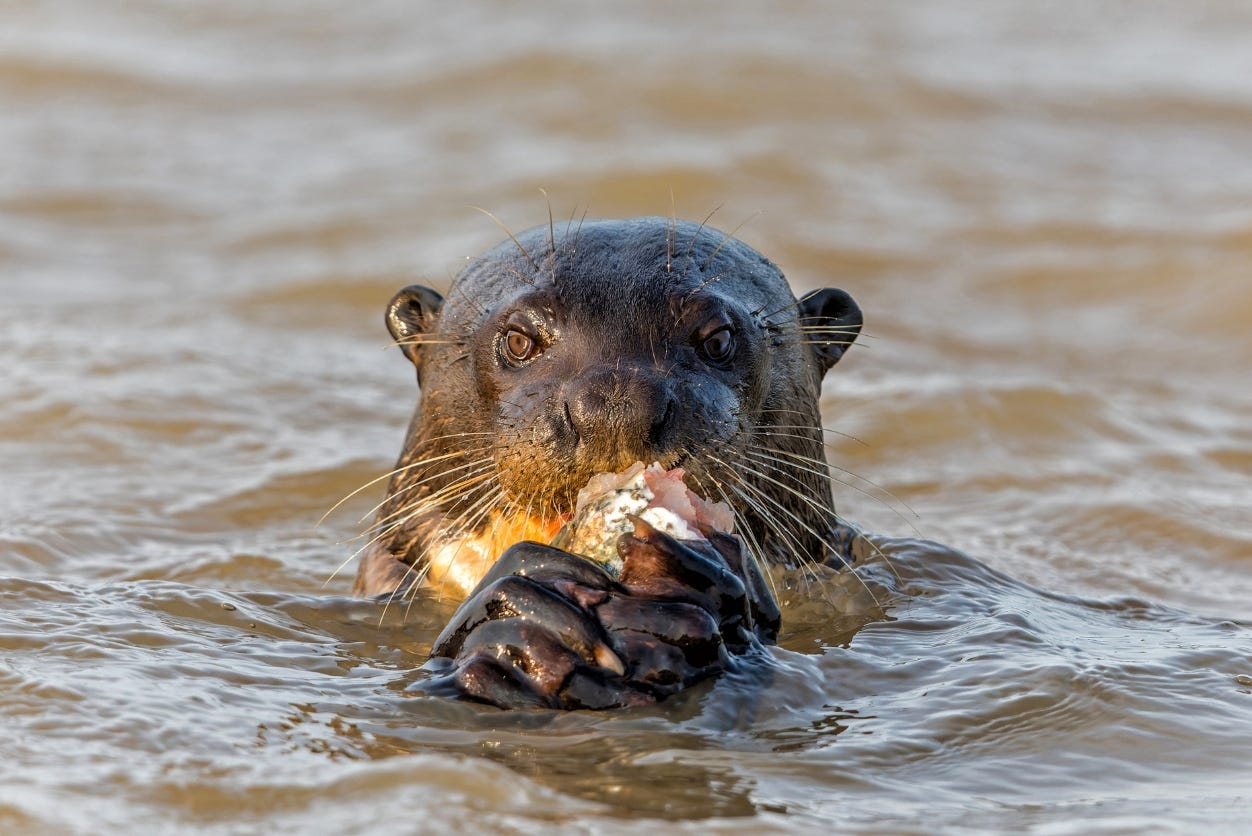Good News #22
Bird life in India, Giant Otters in Columbia, solar power in Bordeaux, grassland preservation in Canada, and seaweed farms in the Netherlands
Here’s your weekly roundup of environmental good news stories from around the world. I hope this gives you a much-needed dose of hope and optimism. Enjoy!
Bird life is booming in Khijadiya, India
The Khijadiya Bird Sanctuary near Jamnagar, Gujarat, has witnessed an extraordinary recovery: bird numbers have soared by over 1,000% in less than a decade, rising from about 27,000 in 2016–17 to more than 309,000 in 2024–25. The Gujarat Forest Department credits habitat restoration, wetland management, and improved water flow, which have benefited both migratory birds and sensitive species such as the black-necked stork and Dalmatian pelican. The sanctuary is now considered one of India’s most significant sites for waterbirds.
Bordeaux aims to be the country’s leading solar city
Bordeaux, France, is racing to become the country’s leading solar city, aiming to boost local renewable energy production from just 3% in 2020 to 41% by 2026. Led by ecologist mayor Pierre Hurmic and his team, the city is rolling out solar panels across schools, sports facilities, parking lots, and even atop its former submarine base, which will soon host a 13,000 m² solar plant. Through new rules requiring solar on large buildings, partnerships with housing groups and developers, and a citizen platform for site suggestions, Bordeaux is showing how cities can rapidly expand clean energy while balancing the protection of its UNESCO-listed heritage architecture.
Giant Otters have returned to Colombia
Conservationists in Colombia are celebrating the rediscovery of giant otters in the country’s rivers, decades after they were feared extinct due to hunting and habitat loss. The finding, confirmed by Fundación Omacha and supported by the World Wildlife Fund, highlights the resilience of these charismatic animals and the importance of river conservation. Protecting the waterways they rely on from pollution, mining, and overfishing is critical to ensuring the species can make a lasting comeback in Colombia.
Prairie farmers are protecting Canada’s grasslands
Farmers and ranchers across Canada’s prairie provinces are taking bold steps to protect native grasslands, one of the most threatened ecosystems on Earth. Working with groups like Ducks Unlimited Canada and the Nature Conservancy of Canada, they are entering into conservation easements that guarantee the land will remain intact forever. These efforts preserve carbon-storing soils, critical pollinator habitat, and breeding grounds for grassland birds such as meadowlarks and burrowing owls, while allowing families to continue ranching traditions that have sustained the region for generations.
Researchers are growing seaweed in Dutch wind farm
Researchers from the North Sea Farmers collective have achieved a world first by harvesting seaweed grown within an offshore wind farm in the Netherlands. Supported by the EU’s Horizon 2020 program, the project demonstrates how clean energy infrastructure can be combined with aquaculture to make more efficient use of marine space. Beyond providing a sustainable food and bioproduct source, the seaweed farms also enhance biodiversity by creating new habitats within the wind farm’s footprint.



